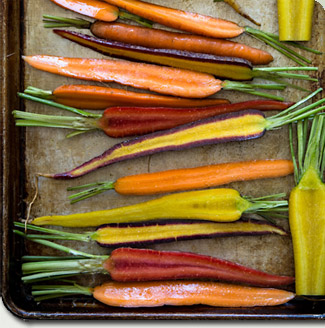
Cooked vs. raw vegetables: Which is healther?
Posted in Diet & Nutrition on August 31, 2018. Last modified on April 23, 2019. Read disclaimer.
After considering dozens of studies, the answer to the question "are cooked vegetables better than raw?" appears to be a definite 'yes'... er, 'no'... ahh, I guess 'both!' Because, actually, both ways are healthy but neither is perfect.
Take carrots, for example. Cooking carrots makes their beta-carotene (a type of antioxidant that supports good vision, healthy bones and strong immunity) more available for us to digest, but it also destroys some of the vegetable's vitamins, all of their polyhphenols (another beneficial antioxidant) and any digestion-enhancing enzymes we'd get from eating them raw.
The same goes for tomatoes. Cooking can increase by up to 10-fold the availability of lycopene (a pigment found in many reddish vegetables and fruits that may help lower our risk of some cancers and heart attacks) but it again destroys some of the vitamin C.
And for spinach and kale, cooking breaks down their oxalic acid that otherwise blocks our ability to absorb the calcium and iron they contain.
How does cooking change vegetables?
According to the Harvard Heart Letter, cooking appears to increase the antioxidant potential of most vegetables by breaking down their thick cell walls -- this makes many nutrients more available to us for us to digest. And besides, they argue, if we eat plenty of raw, vitamin-rich fruits and leafy greens, these will more than offset whatever vitamins we lose from cooking our vegetables.
Tips for cooking vegetables to retain maximum nutrition:
According to a 2009 Scientific American article, when cooking vegetables, the trick is to keep the cook time short. We want to cook them only to the point where they are barely tender... yet crisp. (Of course, some veggies like potatoes must be tender to be edible.)
And when boiling or steaming, keep water to a minimum -- or use the remaining water in broths or even drink it. "Water is not the cook’s best friend when it comes to preparing vegetables." Several studies suggest that dry roasting, stir-frying and microwaving may be the best at retaining nutrients and antioxidant properties.
Keep the nutritious skin on carrots, beets, sweet potatoes and other vegetables rather than peeling them to retain the most fiber and vitamins. Just be sure to wash them before cooking. And cooking them whole rather than chopped helps retain nutrients. But, if you're planning to cut vegetables before cooking, cook as soon as possible after chopping. In fact, this rule applies for lettuce and fresh fruits and vegetables, as well.
And avoid fried foods as much as possible. "Deep fried foods are notorious sources of free radicals, caused by oil being continuously oxidized when it is heated at high temperatures." "The antioxidants in the oil and the vegetables get used up during frying in stabilizing the cycle of oxidation."
So, why are many health food advocates supportive of raw diets?
There is no question that high heat and the use of water in boiling can zap natural enzymes and nutrients... especially water-soluble vitamins like the B vitamins and vitamin C. And since the body can't store water-soluble vitamins, we must replenish them every day.
Fortunately, vitamin C can easily be gotten in foods that don't need much preparation, like fresh fruits, bell peppers and leafy greens... just be sure to not soak them when cleaning and keep them refrigerated (but try to eat them as soon as possible after purchase).
And the B complex vitamins that can easily get leached out in cooking, can again be retained if you consume the remaining water.
Fortunately, we have a couple options that bridge the gap between eating vegetables cooked or raw. These preparation methods preserve the vegetable's fragile nutrients while helping break down their tough cell walls, thus releasing even more nutrition:
- Eat more fermented foods like sauerkraut (the German staple with cabbage but can also deliciously contain carrots, beets and other veggies that you may normally think would need cooking) and kimchi (commonly found in Korean meals).
- Puree vegetables for smoothies. And for this, there is nothing I like more than a Vitamix blender. Our favorite veggie-filled smoothie is to add 1 cup of rice milk, 3 carrots, a little bit of beet, kale, celery or ginger and blend for 10-15 seconds. It's fast, creamy and delicious! And cleanup is a breeze!)
Summary
What is most important is that we eat more veggies and fruits — regardless of how they’re prepared. "We cook them so they taste better. If they taste better, we’re more likely to eat them." And that’s the whole idea.
Your best bet, however, may be to eat a healthy mix of both raw and cooked vegetables.
 Health benefits of having pets
Health benefits of having pets Berkeley, CA's cell phone safety law
Berkeley, CA's cell phone safety law Connection between exercise, memory and aging
Connection between exercise, memory and aging Why women tend to outlive men
Why women tend to outlive men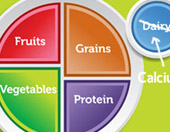 A look at 3 very popular plant-based diets
A look at 3 very popular plant-based diets Most important women's health screening exams
Most important women's health screening exams Breast cancer prevention and awareness
Breast cancer prevention and awareness Tips for helping men living longer (and healthier)
Tips for helping men living longer (and healthier) Men's health issues: prostate and ED
Men's health issues: prostate and ED The many health benefits that come from walking
The many health benefits that come from walking Tips for getting better gas mileage
Tips for getting better gas mileage Why it is important for children to play outdoors
Why it is important for children to play outdoors Why we yawn
Why we yawn Cooked vs raw vegetable debate
Cooked vs raw vegetable debate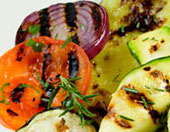 Tips for how to GRILL vegetables
Tips for how to GRILL vegetables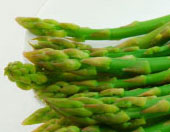 Tips for how to STEAM vegetables
Tips for how to STEAM vegetables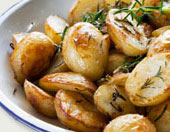 Tips for how to ROAST vegetables
Tips for how to ROAST vegetables